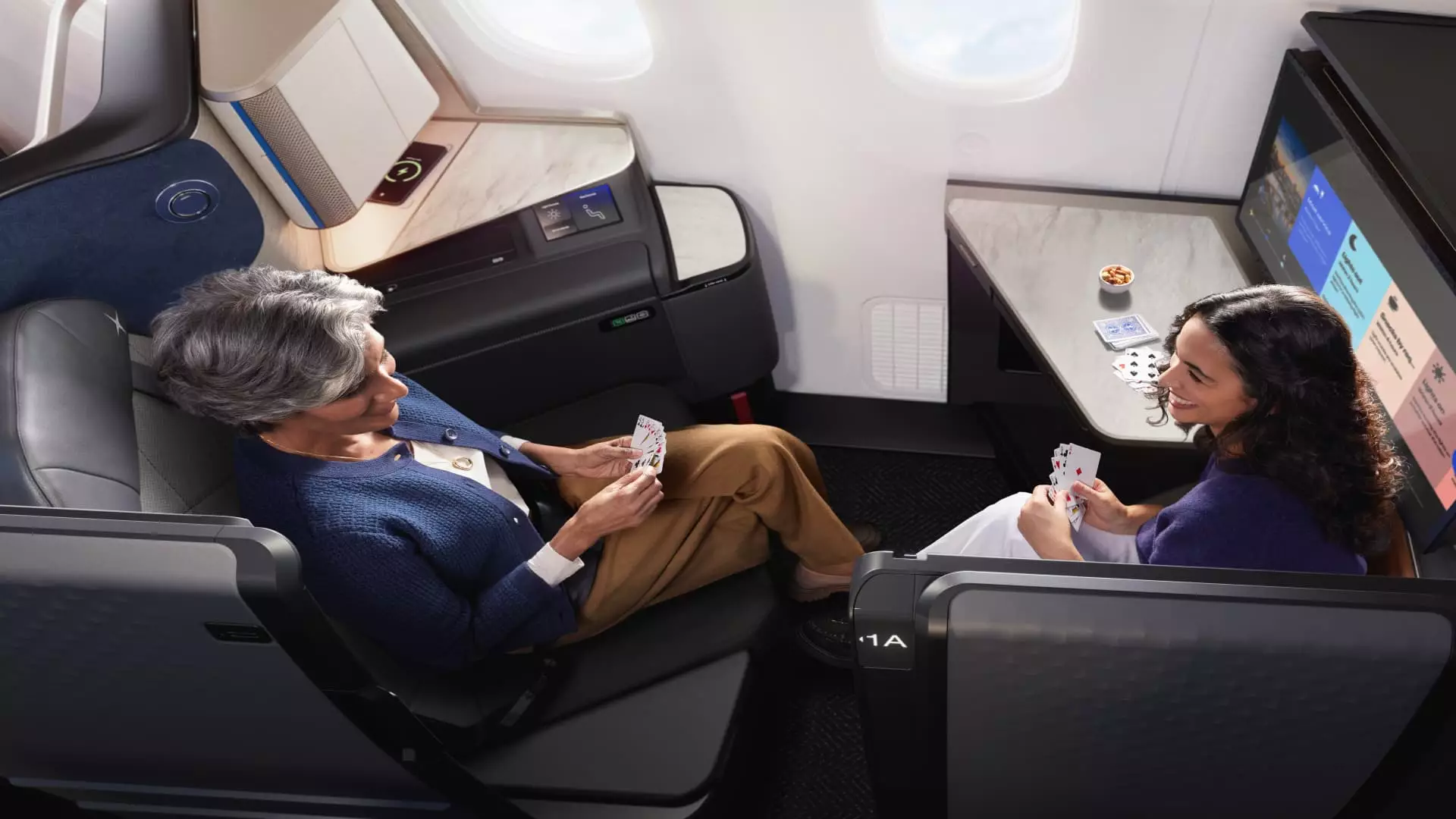In recent years, U.S. airlines have aggressively entered the international business-class arena, harnessing the promise of luxury and convenience to attract high-paying customers. The competition has led to an arms race of sorts, focused on enhancing the passenger experience to justify exorbitant ticket prices. While customers seek comfort and quality, the industry must balance its ambitions with economic realities. As airlines vie for supremacy in a market that pushes the boundaries of opulence, questions about the nature of travel and consumer expectations emerge.
Caviar Dreams and Exclusive Suites
The emerging trend of premium-class differentiation is fascinating and alarming. American Airlines recently announced the launch of their upgraded business-class “suites,” which promise luxurious amenities like sliding doors, trinket trays, and even wireless charging pads. Outfitted in their new Boeing Dreamliners, the “Preferred” suites boast 42% more living area, highlighting a clear shift toward creating a more private and opulent travel environment. These features do attract high-value clients willing to pay the steep price tags often exceeding $5,000 for international routes.
United Airlines is determined to stay competitive by unveiling an equally extravagant offering: doors on their Polaris long-haul business class seats, and the introduction of “Polaris Studio,” which offers enhanced space and a sizable entertainment screen. This segmentation of business-class seating not only elevates the flying experience but also raises questions about consumer psychology—what drives someone to pay a premium on luxury travel despite broader economic conditions?
A Ticket to the High Life
Ironically, this burgeoning business-class segment shines a light on our societal disparities. The escalating costs of premium seating highlight a growing divide; only a small fraction of travelers can afford such luxuries. A ticket from Philadelphia to London may range from approximately $867 in coach to a staggering $5,747 in a new suite. This pricing strategy reveals an industry betting on affluent customers who may remain largely unaffected by economic downturns. Robert Mann, an aviation consultant, posits that the declining experience in economy class drives demand for superior options, thus reshaping travel preferences and reinforcing consumer hierarchies.
Yet, airlines must tread carefully. Delta Air Lines, which has experienced lucrative benefits from investing heavily in its Delta One suite, embodies the principle that a strong brand can cement customer loyalty. However, the ongoing uncertainty in the global economy leaves doubts about whether customers will continue to splurge on such experiences, thereby revealing the tense balance between extravagance and accessibility. As the aviation landscape evolves, the reliance on luxury may prove unsustainable amidst shifting economic tides.
Branding and the Art of Differentiation
One factor that can truly set airlines apart is branding. As American Airlines transitions away from first-class offerings, the nomenclature of “business-class” has become their marketing lifeblood. For many corporations, purchasing first-class tickets is often prohibitive; thus, business-class seats are more palatable. This nuance demonstrates a clever understanding of corporate travel protocols and the willingness of companies to invest in comfort for their employees, especially in competitive industries.
Airlines are packaging their luxurious offerings with ancillary services such as free satellite Wi-Fi and revamping dining options with exquisite details ranging from upgraded meal choices to fresh linens—it’s an experience designed to elevate travel from mundane to memorable. The integration of high-quality comforts, like Bang & Olufsen headphones for travelers, reflects a broader commitment to building brand loyalty through specialized services. Airlines recognize that attention to detail can yield customer satisfaction—a premium that pays dividends in an age of cutthroat competition.
Rising Premium Demand Amidst Economic Challenges
Amid economic uncertainties, airlines are putting significant bets on increasing numbers of premium seats and enhancing the travel experience. Projections indicate growth, with American Airlines set to expand lie-flat seats and premium economy offerings by 50% by the decade’s end. United’s ongoing investments in newer aircraft and luxury cabin configurations mirror a trend of resilience in the face of fluctuating demand for lower-priced tickets. Independence from broader economic conditions may characterize this market segment due to its unique consumer base.
The luxury incentives are evidently successful. Consumers with disposable income are increasingly choosing to invest in experiences that elevate their lifestyle, such as high-end travel. This growing consumer expectation places pressure on airlines to innovate relentlessly or risk obsolescence. As wealthier individuals continue to thrive even during downturns, airlines’ substantial investments in plush seating, upscale services, and comfortable flying experiences may prove prescient rather than indulgent.
Luxury or Impracticality? The Dilemma of Service
While the airlines’ push towards luxury establishes a new standard within business travel, the reality that “air travel is air travel” lingers. Regardless of the lavish suites and gourmet meals, delays and cancellations are beyond any airline’s control, highlighting that even premium experiences may not guarantee satisfaction. In many ways, the push for comfort may come off as impractical in the face of what many perceive as inherent operational chaos.
This paradox raises a question: Is the luxury-focused direction that airlines are taking a viable solution to market competition, or is it merely a façade over enduring industry inefficiencies? Ultimately, discerning travelers will navigate these choices, seeking the best balance of comfort and value, reminding airlines that even amidst the luxury race, substance and reliability retain primacy.


Leave a Reply